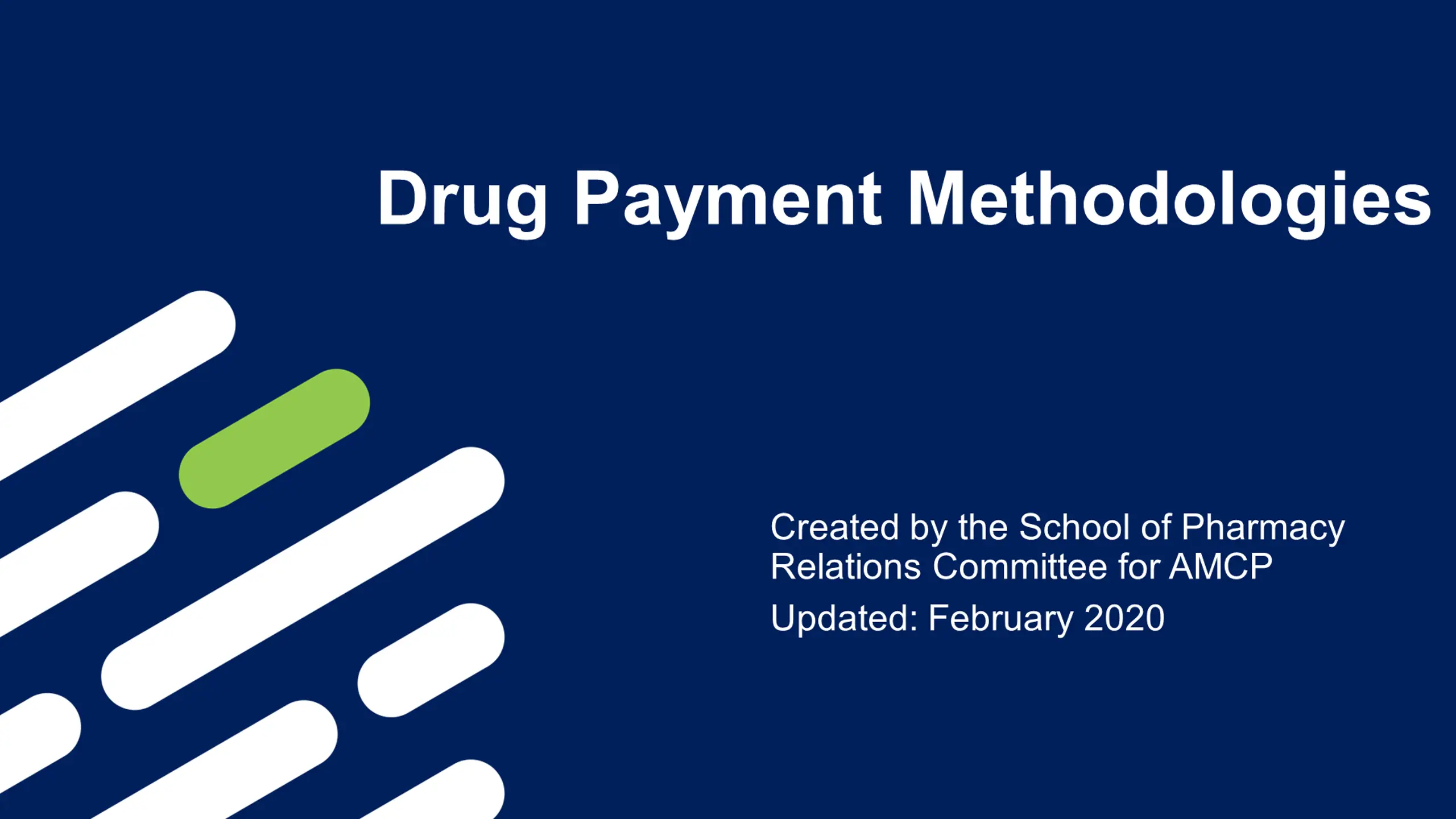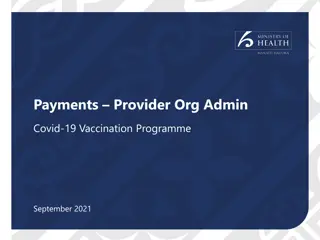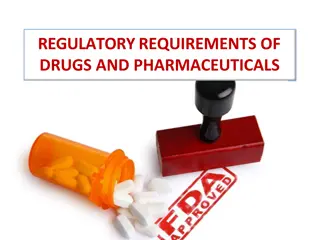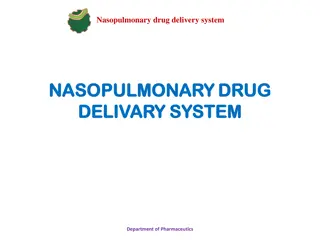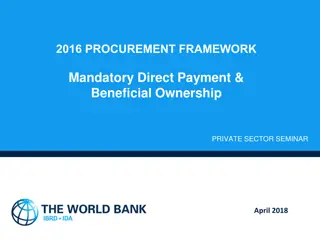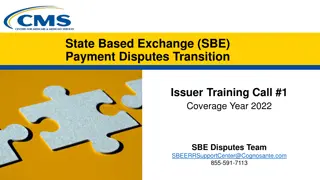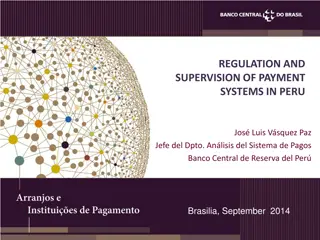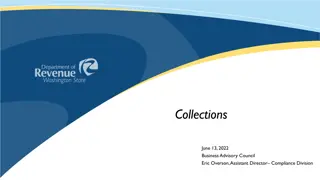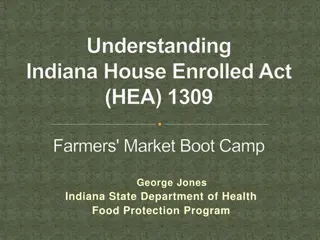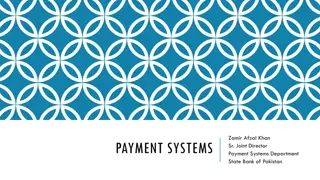Drug Payment Methodologies
Delve into pharmacy claims payment methods, payment benchmarks, and impacts on practice. Explore various drug pricing benchmarks like WAC and AMP.
Download Presentation

Please find below an Image/Link to download the presentation.
The content on the website is provided AS IS for your information and personal use only. It may not be sold, licensed, or shared on other websites without obtaining consent from the author.If you encounter any issues during the download, it is possible that the publisher has removed the file from their server.
You are allowed to download the files provided on this website for personal or commercial use, subject to the condition that they are used lawfully. All files are the property of their respective owners.
The content on the website is provided AS IS for your information and personal use only. It may not be sold, licensed, or shared on other websites without obtaining consent from the author.
E N D
Presentation Transcript
Drug Payment Methodologies Created by the School of Pharmacy Relations Committee for AMCP Updated: February 2020
Objectives Obtain an understanding of pharmacy claims payment methods Describe common payment benchmarks used by payers for different services Understand differences between common payment benchmarks Understand how differences in these payments may affect you in practice
Everything Has a Price Consider the purchase of a new car Think about all the different prices for a new car: Manufacturer s Suggested Retail Price Sticker Price Invoice Price Negotiated Sales Price (Purchase Price) Depending on which dealer you are at, you will likely see variations in these prices Ultimately, the price you pay is benchmarked off one of these prices Pharmacy claims work in a very similar fashion
Drug Pricing Drugs are not much different from that new car There are many published benchmarks for drug pricing, but the true price is often convoluted Payers negotiate different pricing with different pharmacies Often, a payer will pay an independent pharmacy a different price for a prescription than they would pay a chain pharmacy for the same prescription Pricing also varies depending on service (i.e., home infusion pharmacy will get a different price than a long-term care pharmacy) Although not always by rule, most similar drug dispensing services will use the same benchmark
WAC (Wholesale Acquisition Cost) WAC is the most commonly used benchmark in pharmacy purchasing of drugs Published by the manufacturer for sale via a wholesaler Many pharmacies buy their drugs from a Wholesaler (AmeriSource Bergen, Cardinal Health, and McKesson are the three largest drug wholesalers) The price the pharmacy pays to acquire drugs for their inventory is usually based on the listed WAC price WAC pricing does NOT exist for all drugs Since this is generally a Wholesaler price, drug manufacturers who only sell their drugs directly to pharmacies sometimes do not publish a WAC
AMP (Average Manufacturer Price) Established as a part of OBRA 1990 AMP is the average price paid to the manufacturer for the drug in the United States by wholesalers for drugs distributed to the retail pharmacy class of trade. excluding customary prompt pay discounts extended to wholesalers. This price helps determine the Federal Upper Limit (FUL) price Made available to state Medicaid programs monthly Beginning July 2006 Currently, this is a retrospectively calculated price and is held as proprietary information by the government Will need to be public if used as a benchmark Academy of Managed Care Pharmacy. What is the Price Benchmark to Replace Average Wholesale Price (AWP)? . JMCP Supplement. September 2010. Vol. 16, No. 7
Best Price Applies to brand-name drugs Defined as lowest price available from the manufacturer during the rebate period to any entity in the US in any pricing structure This price is listed to ensure that Medicaid (post-rebate) has the best available price for any given brand drug Thus, any private payer cannot pay less than what Medicaid pays for a drug
FUL (Federal Upper Limit) CMS published price specific to a drug entity, strength, and dosage form Similar to a MAC price for CMS Federal Medicaid will fund state Medicaid programs up to this limit for multi-source drugs plus a dispensing fee Like MAC, it prevents a payer from over-reimbursing when a cheaper alternative is available Generally available for most multi-source brand and generic medications
340B Pricing Program Government program enacted in 1992 Requires pharma manufacturers to enter into a pharmaceutical pricing agreement (PPA) with HHS Secretary in exchange for having products covered by Medicaid and Medicare Part B Manufacturer provides front-end discounts on covered outpatient drugs purchased by covered entities Covered Entities serve the nation s most vulnerable patient populations
AWP (Average Wholesale Price) AWP is one of the most commonly used benchmarks in drug pricing Mainly because it is readily available, easily updated, and regularly maintained Many payers base their drug reimbursement to a pharmacy on AWP, specifically for brand drugs Third-parties publish this price for public knowledge (First DataBank (FDB) and Medi-Span are the most widely used)
MAC (Maximum Allowable Cost) Applies to many multi-source (branded/generic) drugs Consider that for some drugs, multiple manufacturers exist, and they have different published prices Payers do not want pharmacies purposely choosing the most expensive source on the market Allows payers to pay the same price for a drug- no matter the manufacturer or brand/generic status This is a payer or PBM-determined price Often, this price is proprietary to the specific payer Some State Legislatures are considering and passing legislation to make MAC prices public and require regular updates to the pricing
Supply Chain Consider the many parties involved before a prescription drug is reimbursed and finally reaches the patient: Drug Wholesaler Manufacturer Pharmacy Patient Rx Prescriber Payer
Pharmacy Reimbursement The transaction that most pharmacists are familiar with: Community pharmacy dispensing a drug to a patient who is covered by a third-party payer Every payer has a contract with a pharmacy to be a provider in their network e.g., if you are a member of Pitt Street Health Plan and you wish to go to Joe s Pharmacy to get your drug; Pitt Street Health will have a contract set up with Joe s Pharmacy to pay them a certain amount for the drug and the services they render to you as a member
Pharmacy Reimbursement (example, cont.) Pitt Street Health will have a rate that they reimburse Joe s Pharmacy for certain drugs Standard contracts before roll-back reimburse about AWP -16% for brand drugs* So if you go to Joe s Pharmacy and obtain a brand drug, you will be told a copay amount or a coinsurance to pay, the rest (up to AWP -16%) will be paid by Pitt Street Health So if AWP changes, then the amount Pitt Street Health pays the pharmacy also changes * Illustrative contract rate
Pharmacy Reimbursement (example, cont.) Contracted Rate A prescription is brought to Joe s Pharmacy for Pharmastatin 20mg #30 (single source brand drug) WAC= $2.40 per capsule AWP= $3.00 per capsule AWP -16%= $2.52 per capsule Joe s Pharmacy buys 30 capsules for $72 $2.40 (WAC) x 30 capsules= $72 Joe s Pharmacy is reimbursed $78.60 $2.52 (AWP -16%) x 30 capsules= $75.60 Dispensing fee= $3.00 Joe s Pharmacy makes $6.60 on the Rx
Pharmacy Reimbursement (example, cont.) MAC A prescription is brought to Joe s Pharmacy for simvastatin 10mg #30 (multi source product) Brand Zocor= $3.75 per capsule Generic manufacturer #1= $1.25 per capsule Generic manufacturer #2= $1.15 per capsule Generic manufacturer #3= $1.10 per capsule PBM MAC reimbursement rate= $1.20 per capsule Joe s Pharmacy buys 30 capsules for $33 $1.10 (Generic man #3) x 30 capsules= $33 Joe s Pharmacy is reimbursed $39 $1.20 (PBM MAC) x 30 capsules= $36 Dispensing fee= $3.00 Joe s Pharmacy makes $6.00 on the Rx
Pharmacy Reimbursement (example, cont.)* Joe s Pharmacy has a contract with Pitt Street Health for AWP - 16% on brand drugs, but let s say you belong to a different plan For example, you are with ABC Health instead. ABC Health may pay Joe s Pharmacy AWP -13% on brand drugs per their contract Another plan could have a different benchmark, for example, if you are with XYZ Health instead, their contract with Joe s Pharmacy could be WAC +5% Pharmacies are reimbursed differently based on the plan and the rates they negotiate with the payer * Illustrative contract rates
Pharmacy Reimbursement (example, cont.) The patient-facing portion of this transaction is determined by the patient s coverage (benefit design). If the member is on a copay type plan, their copay is independent of the total reimbursement to the pharmacy A Tier 3 brand drug with a $50 copay will be $50 to the member no matter which pharmacy the member utilizes as long as it is part of the payer s pharmacy network. The pharmacy will collect the rest of their contracted amount (AWP xx%) from the payer. If the member is on a coinsurance type plan, their coinsurance is determined by the reimbursement to the pharmacy A Tier 4 specialty drug with a 25% coinsurance would have a variable cost to the member, as the 25% is usually calculated as 25% of the total cost of the prescription. It behooves the patient to go to a pharmacy with a low reimbursement contract with the payer. The possibility of variability in member cost share exists in coinsurance-based plans.
Pharmacy Reimbursement Summary The most common payment benchmark is AWP Although it is a relatively new benchmark, ASP is becoming the gold standard for drug reimbursement for office-administered drugs There are different benchmarks are being considered by many Medicaid programs and may become the new Medicaid standard benchmark
Conclusions Drug pricing is variable based on the type of transaction Wholesaler to pharmacy Pharmacy to a third-party payer Pharmacy to Medicaid Uniformity in the standards of drug pricing is still being discussed Government and legislation have altered previous standards for drug pricing Until a standard is agreed upon in the industry, AWP is holding on
References Academy of Managed Care Pharmacy. AMCP Guide to Pharmaceutical Payment Methods, 2013 Update (Version 3.0). JMCP Supplement. April 2013. Academy of Managed Care Pharmacy. What is the Price Benchmark to Replace Average Wholesale Price (AWP)? . JMCP Supplement. September 2010. Vol. 16, No. 7
Mission & Vision To improve patient health by ensuring access to high-quality, cost-effective medications and other therapies.
